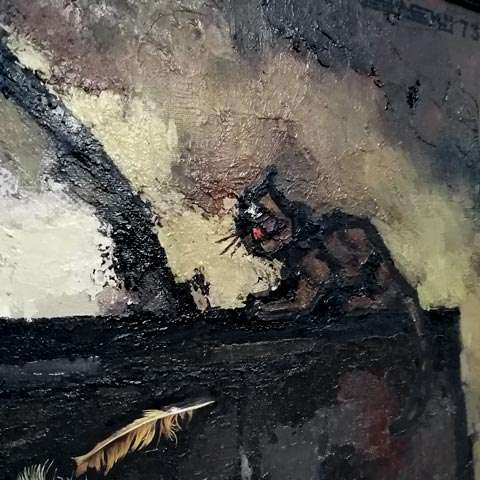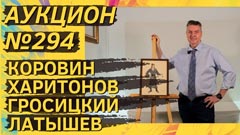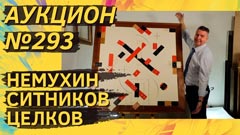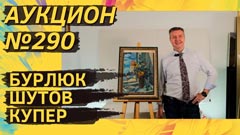
MASTERPIECES
RABIN Oscar Yakovlevich (1928–2018) Cat that ate a bird. 1973. Oil on canvas, mixed media. 70 × 90
Several major nonconformist artists have interpretations of the plot with a cat seizing a bird. Yakovlev has a cat with a bird in its teeth. Nemukhin has a cat with a card. Zverev has a similar subject. And here we have “Cat that ate a bird” by the main member of the Lianozovo group and the organizer of the Bulldozer exhibition, Oscar Rabin. Everyone put their own meaning into it. This is helplessness in the face of a superior force, an irony of fate and a metaphor for the vanity and transience of life. But how could this subject matter come about? It is believed to be an impression of Picasso's 1939 work, “Cat Catching a Bird”. In 1956, it was brought to the Pushkin Museum at the exhibition of Picasso. And it was there that it struck many artists of unofficial art with its depth.
Rabin's painting, painted a year before the Bulldozer exhibition, is interesting because there is no act of tragedy in it. We see only the finale. There is no bird, only feathers (real ones, laid in paint) remind us of it. Everything is on the sly, only silence and grace. In short, “take it as it comes” — as Jim Morrison sang in 1967.
However, words are superfluous. This is the strongest metaphorical work of one of the major artists of post-war art. The most valuable, pre-emigration period. Absolutely museum level.
NEMUKHIN Vladimir Nikolaevich (1925–2016) Solitaire. 1968. Oil on canvas, cards, mixed media. 81 × 79
This is a multi-faceted, complex, full of energy and sparkling with energy Nemukhin. You can look at this work for hours and still find something new. Pastous, multi-layered, with real cards poured into the dough. And, of course, with palm prints — about the same time American pop art stars, including Nemukhin's peer artist Jasper Johns, were doing like that.
Nemukhin and Rabin were friends and associates. They spent hours talking about art in Lianozovo, arranged exhibitions in the barracks, together went to the vacant lot in Belyaevo to demand the right to freely exhibit. Today Nemukhin — one of the most popular artists. His legacy is enormous. And his paintings are feasible for collectors with a budget of 200,000 rubles. But not so, not early. The 1960s is the most valuable period, a rarity. Plus the main plot and the highest artistic level. Yes, it is already expensive Nemukhin, the bill runs into tens of thousands of dollars. But the chance to buy such a work for any money is becoming less and less. Do not miss out.
RUSSIAN AVANT-GARDE
TATLIN Vladimir Evgrafovich (1885–1953) Landscape with red houses. 1940s — 1953. Oil on cardboard. 12 × 16.6
Late, but signed and very correct in theme, Tatlin. Yes, the same Tatlin who invented the spiraled constructivist tower (“Tatlin’s Tower”), “Letatlin” apparatus, innovative counter-reliefs, and many other things. This is an artist of the Russian avant-garde, an irreconcilable ideological and creative rival of Kazimir Malevich. Eternally disputing the father of constructivism and the father of suprematism. According to legend, even when he saw Malevich in a suprematist coffin specially designed by his students, Tatlin muttered: “Pretending”. Which in an allegorical sense turned out to be true: Malevich is still more alive than ever. And the Russian avant-garde, whose symbols were Malevich, Kandinsky, Chagall, Tatlin and Rodchenko remains the main pride of Russian art in the international arena. The achievements of Tatlin and Malevich, in particular, decorated the closing ceremony of the Sochi Olympics in 2014.
After the defeat of the avant-garde and the ordered imposition of socialist realism, Tatlin worked as a theater artist — he made scenography, designed sets. Any of his works are a rarity on the market. Especially signature painting, albeit small. The authenticity of the work is confirmed by the expertise of J. V. Rybakova.
BURLYUK David Davidovich (1882–1967) A peasant woman with a cow. 1966. Oil on wood palette. 25.5 × 35.5
Burliuk is not uncommon here. But this time, the plot and the format are very unusual. First, it is a peasant woman with a cow, the most popular theme. And secondly, the work is painted on a palette — a board where an artist mixes paints. Once the work was painted as a New Year present, as evidenced by the preserved dedication inscription. The painting of the father of Russian futurism is expensively decorated. It is accompanied by an examination of the Grabar Centre. In general, the good here is simple everything. If this is the first Burliuk in your collection, take it without hesitation.
1960s UNOFFICIAL ART
BELENOK Petr Ivanovich (1938–1991) Salvation. 1991. Oil on hardboard. 85 × 115
A large, over a meter, painting of the founder of “panic realism”. The year 1991 is the last year of Petr Belenok's life. In addition to the successful plot, we can note the good preservation. Yes, there are spots and scratches (you can leave them as is or remove with a relatively inexpensive restoration). But there are even preserved false frames, which Belenok nailed to the edges of the hardboard. It would be good to keep them, to leave the piece in time.
RUSSIAN CLASSICS
LARIONOV Mikhail Fedorovich (1881–1964) Landscape with flowering trees. Late 1890s — early 1900s. Oil on canvas. 20.5 × 23.5
Nikolai Khardzhiev, an expert and archivist of the Russian avant-garde, considered Larionov the main innovator of the art of the early twentieth century. He ranked him above Malevich. Larionov, recall, was the founder of the “Jack of Diamonds” and “Donkey's Tail” societies. But Larionov became a shaker of foundations a little later. In the 1890s, like many others, he was influenced by French impressionism. And our “Landscape with flowering trees” belongs to this early period. The painting has a brilliant provenance. It was in the collection of Larionov's friend, the painter Lev Zhegin. Its authenticity has been confirmed by a recent examination by the Repin Center, signed by Julia Rybakova.
VOLOSHIN Maximilian Alexandrovich (1878–1932) The Bay. Late 1920s — early 1930s. Watercolor on paper. 11 × 15.5
The famous Maximilian Voloshin was a poet of the Silver Age, the leader of the Koktebel Republic and an artist of the Cimmerian school of painting. Mason and duelist who shot with Nikolay Gumilyov.
It is believed that Voloshin was established as an artist thanks to the boycott that was announced against him. Publishers massively refused to print his poems, and bookstores stopped selling his collections, allegedly for publicly insulting Ilya Repin. The story is dark and full of distortions. But the fact remains. After 1913, after the obstruction arranged for the acquittal of Abram Balashov, who sliced up Repin's “Ivan the Terrible” in the Tretyakov Gallery, Voloshin began to live and work almost permanently in the Crimea. There he painted soulful watercolors in his studio-workshop. One of his friends aptly called them “the works of metageology”. Voloshin purposely made the drawings small, often postcard format. His principal idea was that art should serve to decorate ordinary houses, not palaces. He often donated his watercolors and sent them with dedicatory inscriptions. But this work is independent, separate, not a gift. There is no signature on it, but it is a completely recognizable Voloshin. He could not be confused with anyone else. And that's another valuable trait of a true artist.
- Log in to post comments










